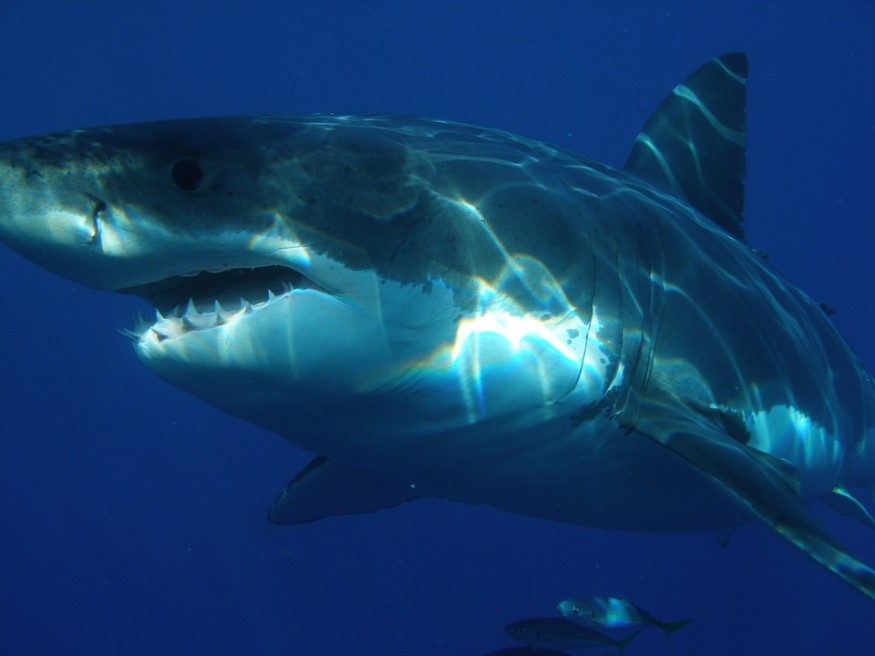
A 2,000-pound female great white shark was spotted swimming along the US East Coast on Saturday.
The Great White was first seen near Nova Scotia in September, according to OCEARCH, a nonprofit organization that tracks marine life. It was given a track and was later named as "Unama'ki" which means "land of the fog" from the language of the indigenous people of Nova Scotia where she was first spotted.
OCEARCH claimed that Unama'ki is the second biggest white shark spotted in the northwest Atlantic. Experts at the OCEARCH believed that she could potentially pinpoint an undiscovered breeding ground and exposed a new nursery of great whites.
The Florida Fish and Wildlife Conservation Commission (FWC) said that the shark activity in the waters of the state peaked from April to October, and they play a major role in maintaining balance between creatures. For that, the FWC warned the tourists to be aware of their surroundings especially when going to the ocean.
But shark attack is quite rare, they added. In fact, experts say that there is a higher risk of dying because of cows than sharks.
Disappearing shark in Cape Town's water?
The Seal Island, just like what its name suggests, is an island full of fur seal. Because of the abundance of these species, it became a popular feeding site to the most feared sea predator, the Great White shark.
This island is probably the most popular feeding spot for the Great Whites, and the most popular spot for the tourists who enjoy sharks viewing, says Chris Fallows, a shark expert who made a name after photographing a Great White shark "flying" out of the water while chasing its prey.
Unfortunately, this situation is no more. The environment has changed and the white sharks have not been seen for almost a year.
According to Sara Andreotti, a marine biologist associated with Stellenbosch University, there has been a steady decline before a dramatic collapse happened.
Estimating the population of sharks is pretty difficult. Andreotti said that a researcher could be counting the same shark he had spotted already. So for that, she used a different method -- through collecting DNA samples from the sharks. She and her team spent months of jabbing white sharks with a special kind of spear tip to collect a small amount of their flesh.
Then, in 2016, the study was completed and published. The team found out that there were only a few hundreds of white sharks in the sea. But what is even more alarming is that the DNA analysis shows that there is low genetic diversity -- which means most of these sharks are born through inbreeding. By doing so, they are mostly suspected of genetic aberration, like diseases, which lowers their chance for survival.
Other scientists said that the great white sharks were preyed on by orcas or killer whales, forcing them to move out of the False Bay. Some proposed that maybe they have migrated elsewhere since this species of sharks are known to travel large distances.
Both Fallows and Andreotti disregarded this idea since there are no reported sightings of orcas in the area. The migration is also out of the question since, according to Andreotti, the South African breeds do not do well by intermingling with the Australians or even the Atlantics.
The last factor that they have considered is the commercial fishing industry that is growing in the South African waters. According to Fallows, trawlers would sometimes accidentally catch large sharks.
As South African oceans become less abundant each day, Fallows reminded everyone to step up the effort to conserve what was left.
© 2025 NatureWorldNews.com All rights reserved. Do not reproduce without permission.





